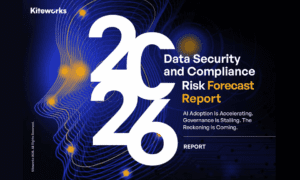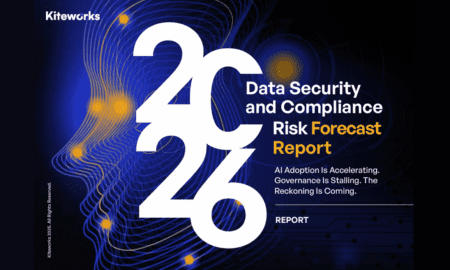Artificial intelligence is increasingly embedded in the backbone of global finance. From real-time credit scoring to fraud detection and algorithmic trading, AI has become the defining force behind how financial institutions operate, grow, and compete. Yet as technologies evolve, so do expectations. In this high-stakes climate where innovation must meet responsibility, one researcher has proposed a model that is gaining traction for its clarity, utility, and ethical grounding. Omoniyi Onifade, in his 2021 publication in Iconic Research and Engineering Journals, delivered a practical and principled framework for predictive modeling that is drawing attention among developers, regulators, and financial leaders alike.
In the paper titled A Predictive Modeling Framework for Financial Decision Making Using Artificial Intelligence, Omoniyi presents an end-to-end blueprint that addresses not only the technical requirements of model development but also the regulatory, ethical, and social dimensions. His approach is timely. In the United Kingdom, AI-related investments in the fintech sector surpassed £11 billion in 2021, second only to the United States. As financial systems become more automated and data-intensive, there is growing scrutiny from the Financial Conduct Authority (FCA) and the Information Commissioner’s Office regarding explainability, accountability, and fairness in automated systems.
“The goal,” Omoniyi says in an interview, “is not just to build smarter models, but to build models we can trust. It is not enough to be accurate; we must also be accountable.” That principle underpins every stage of the framework, from data preparation to deployment.
The first step outlined in Omoniyi’s model is financial problem definition. He insists that predictive modeling should never begin with the algorithm. “Many developers jump straight into coding without understanding the business problem. But without a clearly defined objective, your model is like a GPS without a destination,” he says. His framework emphasizes that financial questions—whether about customer retention, default risk, or investment volatility—must be clearly scoped before technical implementation begins.
Once the objective is clear, the focus turns to data. Omoniyi outlines comprehensive preprocessing strategies for handling missing values, outliers, and inconsistencies. “The quality of your model depends on the quality of your data. You cannot predict the future with noisy, incomplete history,” he explains. He suggests using normalization techniques and imputation methods that ensure the dataset is both robust and representative. This stage, he notes, is especially important in regions with fragmented financial infrastructures, where data gaps are common.
Feature engineering is another crucial pillar. In this phase, raw data is transformed into meaningful variables that help capture hidden trends or behaviors. “You have to create features that speak the language of finance,” Omoniyi advises. “Things like spending velocity, balance fluctuations, or time-weighted transaction frequency are not always present in raw data—but they are critical to understanding financial behavior.”
His model does not promote a specific algorithm. Instead, it encourages careful algorithm selection based on the problem, available data, and performance goals. He compares logistic regression, support vector machines, decision trees, and deep learning models, providing insight into when and why each method might be used. For high-stakes applications like loan approvals or fraud detection, transparency is as vital as accuracy. “In some cases, a simpler model is better because you can explain it. If regulators ask why someone was denied credit, you need to show them more than just a prediction,” Omoniyi points out.

Evaluation and validation are also treated with nuance. The framework includes multiple performance metrics such as recall, precision, and AUC-ROC. These are more appropriate than a single metric like accuracy, especially in imbalanced datasets. “If only 5% of your customers default on a loan, then a model that predicts ‘no default’ for everyone will still be 95% accurate. But it will be useless,” Omoniyi says. “You need to measure what matters.”
A standout component of the framework is its emphasis on deployment and real-time monitoring. Omoniyi advocates for a feedback loop where model predictions are continuously evaluated and models are retrained as new data arrives. “Markets change. Behaviors shift. If your model is static, it becomes obsolete,” he warns. This aligns with current best practices in DevOps and machine learning pipelines, where automated retraining and alert systems are standard features of responsible AI deployment.
Explainability is not an afterthought. It is central to the model. In jurisdictions like the UK, where individuals have the right to an explanation under Article 22 of the UK General Data Protection Regulation (UK GDPR), this is legally essential. Omoniyi introduces tools such as SHAP and LIME that allow practitioners to visually and mathematically decompose predictions. “Your model should not be a black box. It should be a glass box,” he says.
Omoniyi also addresses algorithmic fairness, a topic gaining momentum globally. A 2020 study by the Centre for Data Ethics and Innovation revealed that biases in training data can lead to discriminatory outcomes in AI systems. His framework recommends conducting fairness audits, rebalancing skewed datasets, and embedding ethical checkpoints in the modeling process. “Bias is not always intentional. But if we do not actively check for it, we are complicit,” he states.
To improve realism, Omoniyi proposes incorporating behavioral finance data. Traditional models often assume rational actors. However, in the real world, financial decisions are influenced by emotion, social context, and cognitive bias. “By integrating behavioral indicators, we can build models that don’t just reflect logic, but reflect life,” he explains. He notes that this approach enhances accuracy in consumer lending, credit scoring, and financial planning models.
The paper includes over sixty citations, drawing from technical journals, financial analytics research, ethical AI policy documents, and case studies. It serves as a rich academic foundation for anyone wishing to understand the intersection of finance, data science, and social responsibility.
He also provides practical advice for implementation. Tools such as Python, Scikit-learn, TensorFlow, and cloud platforms like AWS and Azure are recommended for prototyping and deployment. Containerization tools such as Docker and orchestration platforms like Kubernetes are highlighted as critical components of scalable infrastructure. “A model is not useful if it lives only on a laptop,” Omoniyi remarks. “It must live in production—reliable, monitored, and maintained.”
The modularity of the framework makes it adaptable. From multinational banks in London to mobile money providers in sub-Saharan Africa, it can scale up or down based on the institution’s needs and resources. In the UK, this adaptability aligns with regulatory innovation initiatives such as the FCA Sandbox, which provides firms with a safe space to test products, services, and business models.
“AI must be inclusive. It must work for the underserved as well as the elite,” Omoniyi emphasizes. He sees the framework as a tool not just for performance but for participation. If deployed well, it can help extend financial services to people traditionally excluded from formal systems.
The global implications are significant. Emerging markets face the dual challenge of scaling innovation and protecting vulnerable users. Omoniyi’s work provides a roadmap for navigating both. For developed economies grappling with ethical oversight and AI governance, the framework functions as a practical guide for compliance without stifling creativity.
Already, the framework has begun appearing in regulatory briefings, fintech accelerators, and university syllabi. Some firms are using it to audit their AI models, while others are using it to design entirely new systems. In either case, its value is clear. It brings structure to complexity and transparency to automation.
Omoniyi closes the paper with a message of balance. “AI is powerful, but it is not magic,” he writes. “It will not fix broken systems, but it can amplify strong ones. If we build with care, with data, and with conscience, we can create technologies that serve people—not just profit.”
It is this balance of vision and realism that makes Omoniyi Onifade’s work stand out. At a moment when artificial intelligence threatens to become either a panacea or a pariah, his framework offers something better: a plan. Not just for building models, but for building trust.


































